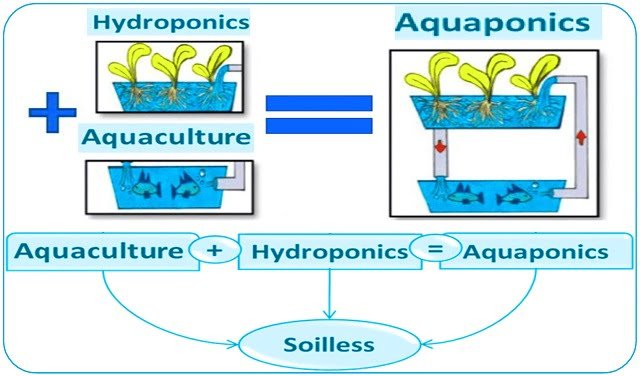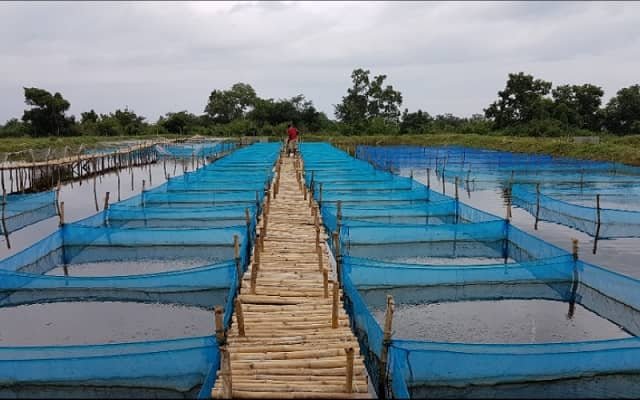
The seaweed industry in Europe is at a turning point, with enormous growth potential and the urgent need to ensure that this development is sustainable across all its pillars: environmental, economic, and social.
A recent study published by researchers from Nord University, Linköping University, the University of Lisbon, and the Norwegian Seaweed Association, among other organizations, delves into the challenges and opportunities, proposing a seven-step roadmap to guide the sector towards a future where Europe positions itself as a benchmark in seaweed production, with a goal of 8 million tons and the creation of 85,000 jobs by 2030.
A sleeping giant with challenges to overcome
- 1 A sleeping giant with challenges to overcome
- 2 Why bet on algae? Benefits and risks of expansion
- 3 Listening to key stakeholders to chart the path
-
4
A seven-step roadmap
- 4.1 Establish limits for carrying capacity
- 4.2 Increase social acceptance through research-based education
- 4.3 Build industrial synergies and collaborate across disciplines
- 4.4 Establish industry-specific regulations that protect diversity
- 4.5 Conduct research to document impact and facilitate innovation
- 4.6 Valorize ecosystem services
- 4.7 Develop a seaweed-based market
- 5 Conclusions and next steps: A collaborative future
- 6 Entradas relacionadas:
Globally, Asia dominates seaweed production, holding 99% of the market and producing 34.7 million tons annually. Europe, in contrast, produced only 3.8% of the 287,033 tons harvested in 2019, with most coming from wild stocks. Norway leads European production, primarily through the wild harvest of Laminaria hyperborea and Ascophyllum nodosum, while commercial cultivation, focused on Saccharina latissima and Alaria esculenta, is still incipient. Portugal complements this picture with species adapted to warmer waters.
The European sector faces significant obstacles: high production costs, limited infrastructure, complex regulatory barriers, and the need for consistent, high-quality biomass. Unlike Asia, Europe largely depends on wild seed material, and there is a mismatch between cultivated species and market demand. Overcoming these challenges through genetic selection, improved seed material, and technological innovations is crucial.
Why bet on algae? Benefits and risks of expansion
Seaweed cultivation offers notable advantages: it does not require arable land, feed, fertilizers (on small farms), antibiotics, or pesticides. Algae absorb carbon and nutrients, support marine food webs, and provide habitat. It aligns with 13 of the 17 UN Sustainable Development Goals.
However, a production increase as drastic as projected (a 30-fold increase) raises concerns about sustainability thresholds. Intensive cultivation could deplete nutrients in oligotrophic regions, affect phytoplankton populations, create hypoxic conditions on the seabed due to excess organic matter, and reduce light penetration. Other risks include the spread of non-native species, diseases, and the overexploitation of wild seaweed beds for seeds, in addition to possible genetic homogenization and conflicts with existing maritime activities.
Listening to key stakeholders to chart the path
To develop this roadmap, researchers employed a participatory approach and scenario analysis. They conducted 9 semi-structured interviews with industry representatives from Norway and Portugal, covering topics such as sustainability, regulatory frameworks, impacts, and innovation priorities.
Subsequently, they organized a three-day workshop with 14 stakeholders from both countries, representing diverse areas of expertise; and used a “backcasting” model, which starts from an ideal future vision (2050) to identify the necessary steps from the current situation. They also applied tools such as the “Futures Wheel” to visualize long-term impacts and a SWOT analysis (Strengths, Weaknesses, Opportunities, Threats) of the industry’s present state. Discussions were framed by the “Wheel of Sustainability” (WOS), which considers environmental, economic, governance, and cultural dimensions.
Stay Always Informed
Join our communities to instantly receive the most important news, reports, and analysis from the aquaculture industry.
A seven-step roadmap
The analysis revealed that environmental and governance aspects are the most significant for stakeholders. Collaboration and coordination, along with biotic effects, were recurring themes. Based on this, seven general themes were identified for the roadmap, focused on actions that satisfy multiple dimensions of sustainability:
Establish limits for carrying capacity
Defining research-based thresholds for area use, biomass production, and carbon footprint is crucial to prevent negative social and ecological consequences. This includes the need for thorough monitoring before and during farm operations, potentially using eDNA for high-risk factors, and mitigation strategies such as locating large-scale farms offshore and using local reproductive material to preserve genetic diversity.
It is essential to address misinformation about the value and risks of seaweed farming through transparency and proactive dialogue with local communities. Certification and integration with activities like ecotourism can strengthen trust and diversify economies.
Build industrial synergies and collaborate across disciplines
The sector should leverage shared resources and infrastructure with established industries (fishing, aquaculture, offshore wind energy, tourism) to foster industrial symbiosis networks and a circular economy. Co-location with IMTA systems or wind farms, and the development of mobile and lightweight equipment are examples of synergies. Collaboration between producers and researchers is vital.
Establish industry-specific regulations that protect diversity
Current regulations, often adapted from fish aquaculture, have hindered growth. Legislation is needed that supports diversity at the genetic level (avoiding crossbreeding, using local spores, germplasm banks), species level (adapting regulations to different taxa), regional level (origin labels), and stakeholder level (allowing the coexistence of small and large businesses).
Conduct research to document impact and facilitate innovation
It is a priority to investigate the environmental impacts of large-scale cultivation, map genetic connectivity, and advance seaweed biotechnology and its ecosystem services. Learning from Asian experience, mechanizing labor-intensive tasks, developing fast-growing or disease-resistant strains (ideally sterile), and adapting modern approaches like microbiome engineering are key areas.
Valorize ecosystem services
Seaweed cultivation contributes to the UN Sustainable Development Goals (e.g., food security, health) and provides services such as wastewater bioremediation and biodiversity enhancement. However, caution should be exercised when promoting it as a significant solution for long-term carbon storage, as this would require sinking biomass in deep waters, which is not ecologically or economically sustainable on a large scale. It is more accurate to position it as a source of carbon-neutral food production and an alternative to synthetic fertilizers.
Develop a seaweed-based market
Products must be created that resonate with European culture and society, ensuring local value creation. A market that values sustainable production and regional authenticity can command higher prices. Certifications, traceability systems, incorporating algae into traditional foods, and leveraging trends like the “New Nordic Cuisine” or “superfoods” are important strategies. A price of approximately 1 Euro per kg of fresh weight is estimated to be necessary for economic sustainability in Europe.
Conclusions and next steps: A collaborative future
The European seaweed industry has the unique opportunity to distinguish itself by prioritizing sustainability alongside economic growth. The perspectives of the Norwegian and Portuguese industries, though different, show complementary strengths and strategies.
This roadmap offers a path for researchers, policymakers, communities, and the industry. The next step is to implement these actions, which will require trust, interdisciplinary understanding, and collaboration to foster innovation. Future research should evaluate the effectiveness of these practices and their long-term real-world impacts. The European Commission supports this sustainable growth through funding opportunities. While this study focused on Norway and Portugal, expanding research to other European regions will allow for a better characterization of differences and more effective direction of collaborations.
Contact
Alexander Jueterbock
Faculty of Biosciences and Aquaculture, Nord University
Postboks 1490, 8049, Bodø, Norway
Email: alexander.juterbock@nord.no
Reference (open access)
Jueterbock, A., Wigger, K., Duarte, B., Bruckner, C., Chapman, A., Duan, D., Engelen, A., Gauci, C., Hill, G., Hu, Z., Khanal, P., Khatei, A., Mackintosh, A., Meland, H., Melo, R., Nilsen, A. M., Olsen, L., Rautenberger, R., Reiss, H., . . . Zhang, J. (2025). Roadmap to sustainably develop the European seaweed industry. Npj Ocean Sustainability, 4(1), 1-12. https://doi.org/10.1038/s44183-025-00122-9
Editor at the digital magazine AquaHoy. He holds a degree in Aquaculture Biology from the National University of Santa (UNS) and a Master’s degree in Science and Innovation Management from the Polytechnic University of Valencia, with postgraduate diplomas in Business Innovation and Innovation Management. He possesses extensive experience in the aquaculture and fisheries sector, having led the Fisheries Innovation Unit of the National Program for Innovation in Fisheries and Aquaculture (PNIPA). He has served as a senior consultant in technology watch, an innovation project formulator and advisor, and a lecturer at UNS. He is a member of the Peruvian College of Biologists and was recognized by the World Aquaculture Society (WAS) in 2016 for his contribution to aquaculture.




